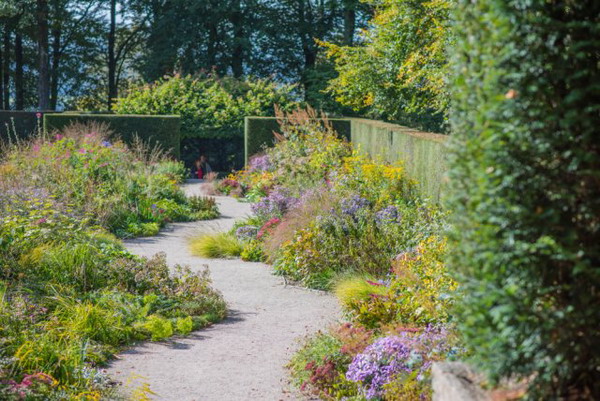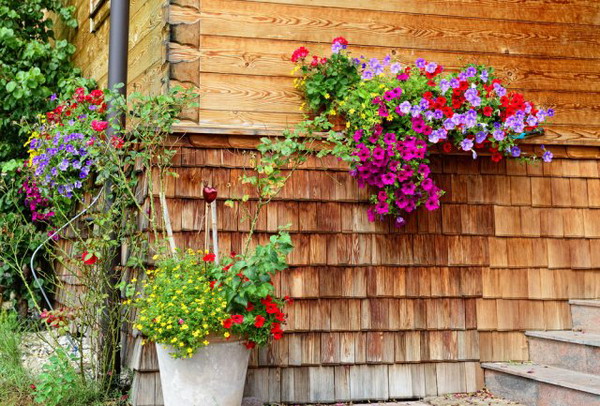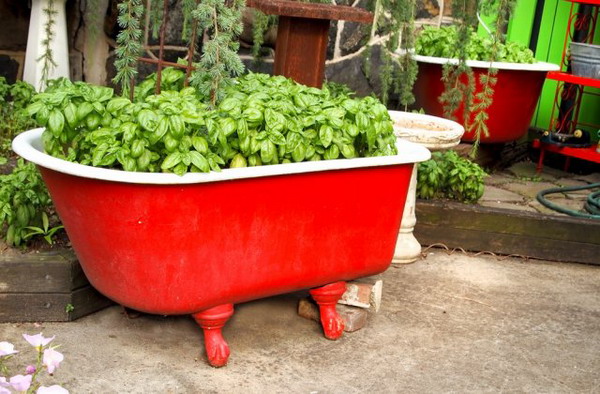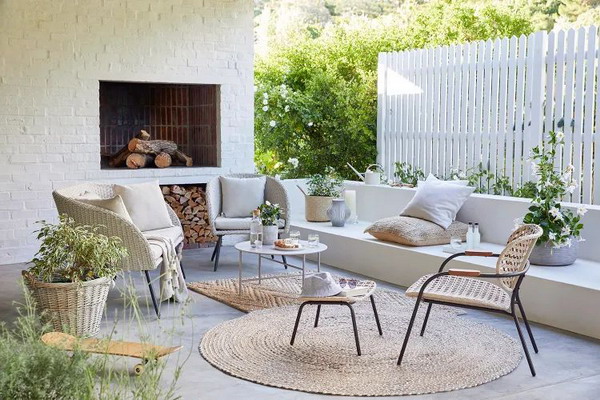Garden design styles do not change as rapidly as trends in clothing. This is generally not surprising, considering that garden design is the slowest of all arts. First, society has new needs, which are later reflected in unusual ideas. Only then, when there are enough of these ideas, will the best of them form trends that will determine the direction of garden design trends in the future.
Garden Design Styles: Low-Maintenance And “New Wave” Gardens
Have you ever considered how much time you spend providing decent conditions and care for “capricious plants”? Tellingly, some decorative crops are included in the list of sissies only because they grow out of place. Not the acidity of the soil, too high or too low levels of groundwater, excess or lack of sunlight, the wrong type of soil…
Of course, it is possible to solve this or that problem, especially if we consider the opportunities that technological progress has presented us. The question is: why waste your precious time and energy on growing crops that are not too comfortable on your site?
Pete Udolph, a famous garden designer who created the “new wave” gardens, asked the same question. The main task of such compositions is to create a feeling of naturalness and miraculousness, as if the garden was invented and realized by nature itself.
Udolfian gardens are more reminiscent of meadows than artificial gardens. However, even with this in mind, the basic principles of arranging the compositions of the “new wave”—low maintenance, all-seasonality, and maximum naturalness—will continue to find application in classical gardens.
With the right garden setting, even minimal maintenance will be enough to keep its attractiveness for a long time!
Garden Design Styles: High Beds And Flower Beds
High beds owe their extraordinary popularity to the same idea of low maintenance. Although they are not panacea and have specific “contraindications” (for example, they are challenging to organize in elevated and colder areas), they still have more advantages than disadvantages.
Since the high beds themselves are structures, frankly, noticeable, it is essential not only to “fill” them correctly but also to arrange them accordingly. By inscribing tall beds into the design of your site, you will give it a zest and smooth out the sharp transition between the garden and vegetable garden areas.
Garden Design Styles: Vertical Gardening
The use of vertical gardening helps to solve several problems at once:
- zoning of space in places where you cannot do without fences and partitions;
- greening buildings, for example, with grapes, hops, or ivy;
- masking unsightly fences and hiding the external imperfections of buildings;
- saving space in a small garden if not enough space for flower beds.
It should be understood that vertical gardening is for climbing plants and arranging vertical beds and flower beds, which also cope with the plant set.
Houses, as if collected from plants and flowers – this is how you can briefly describe the vertical gardening technique.
Garden Design Styles: Decorative Vegetable Garden
Gardens without beds in our area are more likely the exception than the rule, as outdoor space is decreasing. The trend of growing garden crops that have existed in recent years with the advent of the pandemic has not only not lost its relevance but has also strengthened its position.
Do you not want boring single-type beds on your site, but you can’t live without vegetables and greens? A vegetable garden can be beautiful!
As a result, more and more owners of personal plots began to pay attention to vegetables. But if the emphasis was placed on practicality earlier, and most summer residents tried to hide the beds from prying eyes, now they are trying to integrate the gardens harmoniously into the general garden.
Ornamental cabbage will not lose its popularity either. Its unpretentiousness and all-season nature allow this culture to be used in decorating gardens of different styles. If you want to experiment with design and, at the same time, surprise your guests with an unusual spectacle, be sure to try to equip a cabbage flower bed on your site.
Decorate your garden with an unusual and easy-to-care plant.
Garden Design Styles: Container Floriculture and Horticulture
People people have spent much more time at home in recent years. Because of this, a rapid increase in interest in flower gardens and vegetable gardens on balconies and window sills began. Surprisingly, this trend has not spared the owners of personal plots.
A wide assortment of vegetables for container growing allowed them a small but stable harvest throughout the year. Having tried to grow a home garden on their balcony, some summer residents appreciated using containers and began actively using them in their gardens.
Have you heard about the baby boom? No, this is not a fashion for children. This is the name of the worldwide craze for miniature vegetables.
The trend in recent years for using containers and flowerpots to grow annual and perennial ornamental crops has not lost popularity. Potted gardens have many benefits. Simple care, mobility, and much room for imagination, which use flowerpots and boxes, allow you to experiment with colors, shapes, and textures with minimum labor costs.
We share some small secrets for creating a beautiful, fragrant, stylish container garden.
Garden Design Styles: Environmental Friendliness
Under “environmental friendliness,” most people understand the almost complete rejection of chemical pesticides and insecticides in favor of biological agents to protect the garden and vegetable garden from diseases and pests. However, this concept is much broader since it includes caring for plants and other inhabitants of the site.
They are not trying to lure followers of good neighborly relations with the environment to their dachas, which are beneficial insects, birds, hedgehogs, and even worms! This means that every year, there will be an increase in interest in arranging birdhouses, feeders, and drinkers for birds and insect houses, giving just incredible scope for imagination.
Are you unsure how to fill the site with life and attract beneficial insects and birds? Here are a few tips.
Garden Design Styles: Cereals And “Grandmother’s” Plants
Although the popularity of a particular culture will differ not only in different regions but even in garden partnerships located at different ends of the same area, it can be said with complete confidence that in the coming years, everyone will “reign” the same grains and herbs.
Although the mallow, rudbeckia, dahlias, daylilies, peonies, violets, and other flower cultures that reigned in garden flower beds three to four decades ago have somewhat lost their popularity, they will fit perfectly into the concept of a low-maintenance garden.
Flowers from childhood: tulips, dahlias, daisies, forget-me-nots, irises… Do you know what unites them all? Easy to care for.
Gardening fashion is leisurely. Therefore, even considering the changes that have taken place over the last few years, garden design can still be determined. The trend for environmental friendliness and careful handling of nature will not lose relevance.


